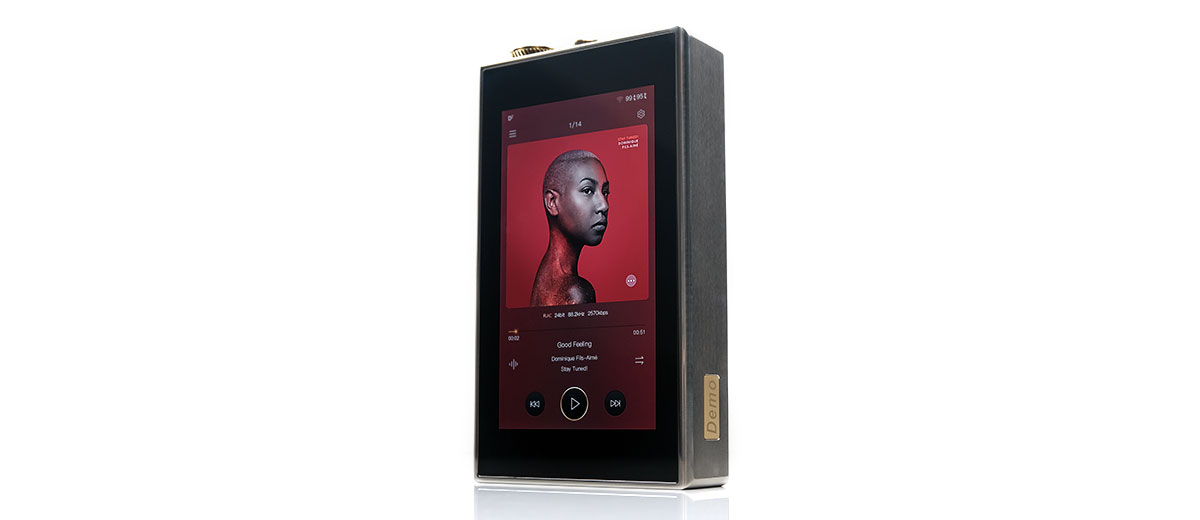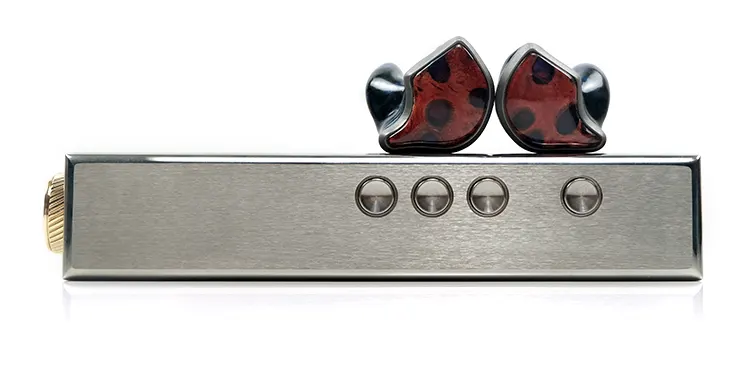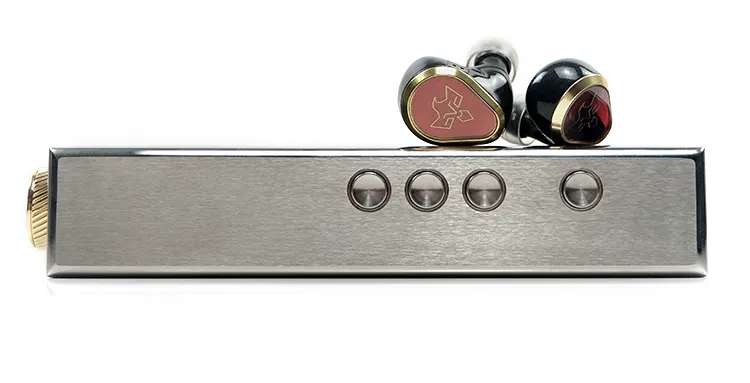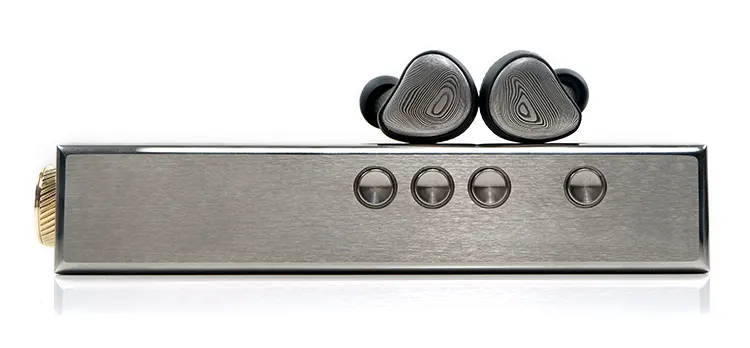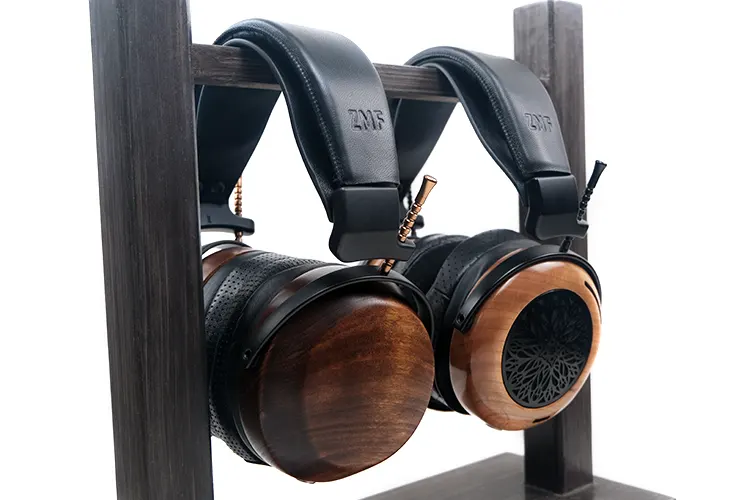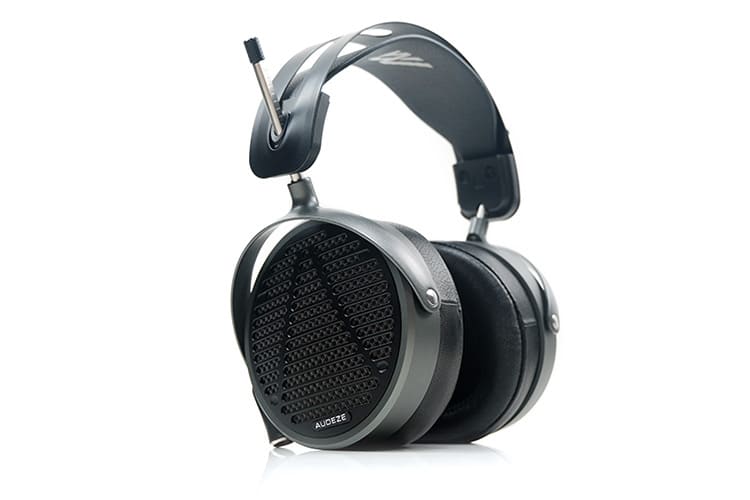Sound Impressions
All impressions below were created using the Unique Melody Multiverse Mentor, Noble Audio’s Viking Ragnar monitors, and the ZMF Headphones Atrium Closed and Open back headphones.
Summary
If you are moving through the MAX series you can clearly see how the DX320 MAX Ti still retains that signature high-fidelity linear delta-sigma polish. However, at the same time, it is perhaps the most natural-sounding version yet and definitely will produce the most complex and immersive soundstage to date also.
There are very few portable class devices that will challenge the DX320 MAX Ti in terms of sheer scale with incredible levels of resolution to go along with that scale.
With the Quad-DAC setup, this version of the ultimate mode surpasses the DX300 MAX dual-DAC equivalent producing an improved level of channel separation and creating even more perceived space with a blacker background.
It’s the perfect companion for monitors that excel in speed and staging capability such as the Noble Audio Ragnar and the Unique Melody Multiverse Mentor.
It is not just the low-noise floor and lack of hiss either that impresses. The channel balancing is superb with the stepped attenuator at low volume. With the recent firmware update, you can use a mix of the attenuator, gain stage, and DAC volume slide to fine-tune for both super-efficient and heavy loads.
The headroom is also impressive, especially for higher loads where you usually expect a DAP to perhaps reach its natural limit. Pairings such as the 300Ω ZMF Headphones Atrium are driven well with higher gain settings increasing both the vibrancy and impact of the performance.
Timbre
What you might not expect is the amount of body and improved saturation in the DX320 MAX Ti instrumental and vocal note timbre.
Not only has the surrounding space and the quality of the imaging been enhanced but the weight of each note has been increased with a stronger fundamental and further refinement in the quality of the attack of each note.
I suspect the treble has a very slight diminution in aggressiveness to ease that perception along. Compared to the original DX220 MAX, it definitely sounds less edgy and dry which will help a lot with high-energy percussion passages that could fatigue otherwise.
That’s also where the DX320 MAX Ti very carefully moves from the previous ultra-neutral AKM tuning in the DX300 MAX to a more natural lilt, one that improves the flexibility for pairing with brighter headgear.
Vocals in particular have more bloom and presence compared to the slightly less vivid performance from the previous MAX. The additional space does help also, making it much easier to pick out the character of each vocal performance.
I would still argue that the tuning is not persistently heavy-handed or thick though there is some bloom and a slight uplift in our paired gear’s low-end compared to the DX300 MAX. If you want something thicker or warm sounding on the lows then the DX320 MAX Ti is perhaps not the ideal choice.
The focus here is on the fine detail and the overall quality and speed of the note being delivered. I mentioned delta-sigma polish initially and the DX320 MAX Ti is perhaps one of the best proponents of that type of high-fidelity coloration. Nothing feels exaggerated, like an almost perfect harmonic balance with each monitor or headphone pairing.
Staging & Dynamics
The switch to a Quad-DAC for the ultimate mode combined with the upgraded amplification actually makes the older DX300 MAX sounds somewhat center focused in comparison.
You get a much stronger sense of depth and space, improved width or channel separation, and generally, more air to allow individual instruments to be picked out with ease.
It’s the mids for me that benefit the most from this change or improvement. Vocal imaging seems just a hint closer to your ear with most pairings but at the same time, the depth and space behind and around them has improved considerably.
You can pick those differences up readily on the likes of the Multiverse Mentor pairing which can produce some stunning midrange performances with the right pairing.
The older MAX is more neutral in its vocal positioning with instruments comparatively closer so it can sound more condensed and less holographic in its delivery. Combined with slightly less fullness the vocals lose a bit of comparative impact and presence compared to the DX320 MAX Ti/MM pairing.
The depth and layering on the DX320 MAX Ti are fantastic but do not confuse that with being ‘thick’ in its delivery. The MAX is not a player that will transform your headgear with warm enveloping bass.
Rather, it’s about the dynamic range and quality articulation of the low-end notes that are being produced. For example, the Ragnar dynamic driver responded beautifully when called upon.
I had wondered when initially listening to it if the pairing would be quite shallow, but once the music hit a low note the driver hit a very clean and pure response that grabbed your attention right away.
Line out
The good news is that both the mechanical gain switch and ultimate mode on the DX320 MAX Ti work just fine using both the 4.4mm balanced and 3.5mm SE line-out options. Just remember you have to switch between LO and PO via the OS rather than use a dedicated line out.
With the DAC volume at maximum and the high gain stage using the dedicated balanced 4.4mm output, the DX300 MAX seems louder than the DX320 MAX Ti on its highest stage 4 gain setting. I find myself having to dial down the volume on the paired amplifier when switching to the older MAX.
However, the performance is more spacious sounding for me using the Ferrum OOR/HYPSOS and the Audeze MM-500 combo with the DX320 MAX Ti. More so with headphones such as the Abyss Headphones Diana TC and the Susvara which mesh well with that mix of power from the OOR and the resolution and speed from the DX320 MAX Ti.
With Ultimate mode turned on the DX300 MAX seems comparatively condensed staging-wise and more center-focused. Whereas the newer MAX Ti projects an airier quality with improved channel separation and dynamic range.
The vocal performance also has a bit more presence and life about them whereas the DX300 MAX drops them a bit further back with slightly less texture coming through on the MM-500.
Like the DX300 MAX though, the MAX Ti does sound a lot more ‘joyful’ in Ultimate mode combined with high gain. It is quite smooth on lower gain options but if you want more aggression and a bit more power in the bass performance opting for a high-gain balanced line out will give you that.
Synergy
Efficiency
Immediately you can see why iBasso moved to a proper 4-wiper stepped attenuator when using sensitive IEMs. The channel balancing is excellent, even with my most sensitive IEMs such as the CA Solaris or the Andromeda 2020 I get a perfect channel balance at every step.
For IEMs and headphones that are perhaps less efficient then the four-stage mechanical gain switch can also assist in fine-tuning an appropriate volume level for daily use.
However, stepped attenuation may not offer the same level of precise volume control as a relay system beyond low volumes. You also have to get used to the brief signal drop-out when you switch steps at the same time.
For super-sensitive IEMs that might have an ideal listening level that falls in between the 24 steps then I do suggest you use it in tandem with the digital DAC volume control for PCM. Sadly, there is no such option for DSD playback though you can volume match DSD in both of the DX320 MAX Ti software platforms.
The noise floor is superb with all IEMs, both sensitive and less so. I cannot pick up a hint of noise or background hiss from the DX320 MAX Ti amplification section using a low-gain stage setting.
IEM monitors such as the VE Phonix have a superb blackness to the background, more so than the DX300 MAX, though the improved channel separation and space probably enhances that perception considerably.
IEM Pairings
The IEMs with space and articulation really excel with the DX320 MAX Ti. Monitors such as the UM Multiverse Mentor and the Noble Audio Viking Ragnar sound incredibly expansive, holographic, and resolving.
It is quite a polished ‘delta-sigma perfect’ tone to me but one that is more natural and fuller sounding in its delivery compared to the previous MAX units. That can be a difference maker with the Ragnar for example which does need a careful balance through the highs.
I tend to use Final E tips which are perhaps not as forgiving as foams but produce an improved bass response from Noble’s flagship monitor. With the DX300 MAX and more so the DX220 MAX it can leave the treble a bit too edgy sounding.
The DX320 MAX Ti shaves off some of that edginess giving the Viking a smoother upper mids and treble tone whilst at the same time introducing better vocal bloom and improved channel separation.
This pairing sounds huge but also dynamic as opposed to wispy or lean. The low-end dynamic driver responds quickly with an excellent snap to its sub-bass delivery.
The UM Multiverse Mentor is all-BA so you might find the more linear DX320 MAX Ti low-end combined with bass BA to sound more neutral in quantity compared to some other more colored sources. However, the articulation and mids harmonic balance is superb with this pairing.
I also find switching to Ultimate mode can further enhance the perception of depth and scale giving a better sense of power from lower register instruments.
Even moving to stage 2 gain seems to inject a little bit more aggression into the performance. Over a period of time. this has been my preferred pairing and setup out of all the monitors tested.
Headphone Pairings
High Load Headphones
After mentioning a few times that the DX320 MAX Ti has the voltage rails to cope with high loads better than most DAPs it stands to reason the 300Ω Atrium Closed Back and Open version would be tested.
I was not disappointed either. Granted, I still prefer a high-end SET amplifier setup for these types of headphones but in no way did the DX320 MAX Ti feel like it lacked the headroom to drive them.
Stage 3 or stage 4 gain will work for both with the stepped attenuator sitting around 2-3 pm and DAC volume locked at 100 felt optimal to me. At times I felt Stage 3 was perhaps a better choice than Stage 4 which seemed to tease out a bit more treble sharpness in Ultimate mode.
Of course, you have Mango’s excellent PMEQ system so you can do a 2-3dB narrow band drop of around 0.7 for the Q Factor at 6-7k and that does wonders for any potential sharpness creeping into the Atrium performance, especially for the Closed variant.
On the lows, both the Atrium versions are more neutral sounding compared to something like the Feliks Audio Envy or Cayin HA-300MK2 desktop setups. You can PMEQ a little around 80-100Hz by 3-4dB to generate a bit more ‘thrust’ to the performance but anything more than that and the driver will start to distort.
Planar Headphones
I had pinpointed Meze Audio’s Empyrean as an excellent match with the DX300 MAX previously. The DX320 MAX Ti improves on that pairing. It is an efficient enough planar for the DX320 MAX Ti to handle going balanced at 101 dB @1kHz SPL and offers a nice clean counter to the Empyrean’s darker tuning.
However, compared to the DX300 MAX, the newer MAX pairing sounds ‘fleshier’ and more natural in tone for vocal notes. In ultimate mode, it also sounded more spacious through the mids and highs which is something I always appreciate with the Empyrean’s relaxed treble tuning.
The bass definition remains tight for me rather than voluptuous but with just a hint more sub-bass presence and body compared to the DX300 MAX.
You can now also add the Audeze MM-500 as a quality pairing with more than enough headroom with the DX320 MAX Ti. Initially, I had concerns that the pairing might be a shade too dry and lean but it was anything but that. It sounded lively and more to the neutral to natural side with excellent dynamic range and articulation.
Tonally, the upper mids and treble stayed pure but neither too sharp nor bright so the vocals shine but not at the cost of any edginess. The staging was about as holographic as you can manage from the MM-500 without going high-end SET desktop.
The lows were even more impressive. Not in terms of weight, it’s still fairly neutral sub-50Hz with a little more bloom just beyond 100Hz. Rather, this is more about the punch and speed and this pairing has it in abundance with some excellent layering and separation to go along with it.
Click on page 5 below for our selected comparisons.

